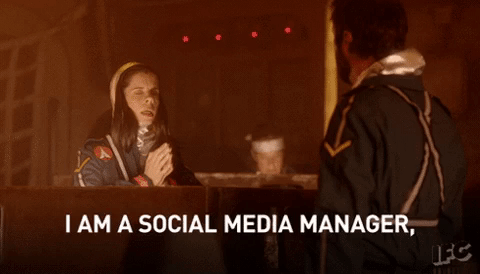In today's digital landscape, social media marketing simply has to be a key pillar of your marketing strategy. It allows you to connect with your target market on a human level, organically increase your brand presence and cultivate a community of brand advocates comprised of guests past, present and future. That’s before you even get to the fact that 67% of us use Instagram as a source of travel inspiration, while 40% of millennials will choose a holiday destination based specifically on how Instagrammable it will be.
Whether you agree with the motives of people using social media for their travel needs or not, the power of social media as a tool simply cannot be understated. The process of booking travel is, in theory, a simple, linear journey, that starts with inspiration: we daydream about new adventures, exciting new cities, and relaxing beaches.
Then we plan: we research what time of year to travel, browse hotels that are within our price range, and what the most convenient travel are. And only then do we pull out our wallet, commit and book.
Though, in reality, this booking journey is filled with tangents and side-quests around every corner.
With social media we can curate content that speaks to each of these stages to provide value to your target audience, so regardless of where they are on their booking journey, there will be content that speaks to them embedding your property or product within their consciousness.
The actual act of building a social media strategy, choosing the correct channels, sourcing, compiling and publishing content tailored to a target audience can be completely overwhelming for those who are new to the game. We appreciate that, so we have compiled this guide to walk you through the most prolific channels, whether you should be using them, and if so, how they can be leveraged to meet your marketing needs, with some handy tips and examples along the way.

So what goes into effective social media marketing for travel brands?
Start with your audience
Who are they? What content resonates with them? What platforms are they most engaged with? Clients – in particular smaller travel brands – usually have a relatively good understanding of their audience, but there are usually surprises to be unearthed too. Data can often reveal opportunities that haven’t previously been identified. A competitor analysis and content audit of your website is the first step in identifying any missed opportunities before building them into your strategy.
Know what platforms to target
Your audience will give you clear road marks of where to focus your publishing. If your audience is predominantly millennials, then Instagram is unquestionably where you should focus the bulk of your efforts. If you’d like to draw in the Gen-Z crowd then ditch Facebook and consider inviting a group of influencers to make a splash on TikTok.
Build out your strategy
Once your audience and platforms are defined, then ask yourself “What do I want to achieve with my social media marketing?” As with anything your brand undertakes, having a clearly defined strategy allows for your brand to efficiently create content that both exemplifies your brand, but will also deliver measurable results.
To the untrained eye it’s abundantly clear when a brand is running full tilt without a concrete Social Strategy in place. There is no cohesion, no storyline, no consistency of quality or posting schedule, all to the detriment of the messaging you’re trying to convey.
A clearly defined strategy has the opposite effect. It reassures your audience with a consistent tone of voice and concisely told stories, allowing your audience to become a surrogate within your content. It also provides them with examples of what they could be purchasing from you, whether that’s dreamy beach vistas, thrilling mountainous adventures, or a simple spa day.
A watertight strategy also prepares you for the worst, should a customer have a sub-optimal experience, how you will deal with that if they take to social media to express their displeasure.
Finally, it clearly states what is most important when recording and reporting results. If you’re brand new then you’ll be focused on growing your audience numbers. However, if you’ve already got 50k followers then your strategy will more likely be focused on ensuring your engagement levels remain high.
So, without further ado, let’s introduce you to the platforms you might want to have a presence on.

The wily veteran, while it's no longer where the cool kids hang out, it still has a hardcore following that is vast and far-reaching.
Relatively speaking, Facebook's active user base is towards the older end of the scale, with over 50% of active users being over 35. As such, your content should be tailored to their sensibilities.
Facebook users are usually seeking updates from friends and family and using groups to keep up to date with local community updates or discuss their niche interests. They are bound to the app by a sense of community, making it ideal for brands to share user-generated content, showcase behind-the-scenes moments, and drive conversations.
For example, if you are a safari brand, then consider sharing stories about famous animals from the locale of your camp. If there is a leopard with only one eye, or a rhino with a distinctive horn then have your guides feedback updates as and when they’re spotted and build a narrative around this. Past guests will be familiar with the tale already, and may want to share their own sighting story in the comment section, while those who are on their booking journey will be gaining insider knowledge before they even land, increasing their excitement at the possibility of sighting a local safari-celebrity.
Content focused on team members can also be particularly effective at driving engagement on Facebook. Consider sharing work anniversaries of those working at your properties, or “candid” behind-the-scenes footage of team members having a brilliant time while at the property. This can also be a surprisingly effective recruitment tool!
With its robust advertising platform Facebook allow brands to reach an enormous, and diverse, audience with relative ease, though results will depend on having a strong budget, and when it comes to travel, a long lead-time to allow for large, considered purchase.
While Facebook is no longer the cool place to hang out, it certainly has its place within your social media marketing strategy. Copying over your Instagram curated content to Facebook is a resource-efficient way of keeping up a presence on the platform, while maximising exposure via Facebook’s sharing of Instagram Reels.
Content Needs and Best Practice
- Content on Facebook can be less visually impactful, as the user base isn’t carefully critiquing what they publish, nor what they consume.
- Use content as a launchpad for conversation and building community.
- User-generated content can perform particularly well and will often invite other users to add their own testimonials.
- Content that invites past users to begin a conversation, such as insider information about your property, or showcasing a particularly popular team member can drive very strong engagement.
Pros and cons to a presence on Facebook
Pros
- Sourcing Content for Facebook is relatively time and cost effective, as the audience doesn’t expect highly polished videos or professional standard photography- think: “would my mum give this a like?”
- For many brands a sizable chunk of their target market will be active and engaged on Facebook.
- Extremely effective advertising tools.
Cons
- Community management can be time-consuming.
- Facebook users can be quarrelsome, so crisis comms could be around every corner.
- Organic reach is not what it once was.
The cool older sibling, it’s been around for a while, and even though it has been through several style iterations over the past decade, its influence is still massive.
Over 50% of Instagram’s userbase is under 35 years old, though has been adopted quickly by older audiences in the past 5 years. Instagram users are drawn to visually appealing content that is aspirational, and increasingly authentic, less polished content. Your Instagram grid can effectively act as a shop window for your brand, and should be curated to showcase the best of what you offer guests.
Over the past few years Instagram has aggressively promoted Reels content, in a move to rival TikTok’s shortform video content. If you’re lacking in video content then consider inviting some influencers or content creators for a complimentary stay, in exchange for sharing a batch of video snippets for you to use on your own channels.
Instagram is an invaluable resource for promoting your brand and inspiring wanderlust, so long as you always keep your target audience in mind when curating your feed. Don’t just post for the sake of posting, and don’t share imagery that isn’t designed to be shared on the platform. You might have a huge archive of press imagery, but the chances are it won’t resonate with users of the platform because it was designed to be published in print- your audience will know this and so will be less inclined to engage with it.
If you are targeting ultra-high net worth individuals who want to relax and detox then your grid should reflect that with slo-mo videos of your infinity pool gently lapping, or super-chic abstract imagery of the loungers for guests to decompress on after their massage. Don’t employ TikTok-style Reels with an on-the-nose narration which will undermine your cool, considered approach to wellness.
Conversely, if you’re a tour operator, or an adventure travel brand then embrace the human interest in storylines. Your guests will be embarking on an adventure when choosing to travel with you, but where did that adventure stem from? When was the first time your South America Manager took on the Inca Trail, and why was it formative for them?
Content Needs and Best Practice
- Post high-quality images that accurately depict the experience guests have when visiting your property, or travelling with your brand.
- Use the caption on static posts to elaborate on the story that is depicted.
- Use 5-10 hashtags that speak to your area of expertise and target audience- experiment and try to hit the sweet spot between generic (where you will get lost in a sea of content) and ultra specific (that isn’t going to give you enough audience exposure). Researching your competitors’ hashtag strategy, and noting any hashtags influencers within your niche use are good starting points.
- Utilise Instagram Reels for short, creative videos that highlight the experience that guests can have when travelling with you.
- Trial using trending audio to accompany your Reels, with a short, snappy caption, and keep video content <10 seconds.
Pros and cons to a presence on Instagram
Pros
- Massive audience interest in travel and a source of inspiration for many users, particularly within the Millennial and Gen-Z age bracket.
- Content can easily be copied over to Facebook, to double your audience with the same piece of content.
- Your guests will more than likely be posting their stay on Instagram (60% post while away, that figure rises to 97% for millennials), enabling you to capture and reshare your guests' content to promote your brand in real-time.
- Instagram is where Influencers and Content Creators originated and continue to dominate, giving your brand options for relatively cost-effective marketing via these channels.
Cons
- Producing Reels content from scratch can be resource heavy, and is never guaranteed to deliver results.
- You must keep posting to Instagram consistently to drive engagement and be promoted by Instagram’s algorithm.
- Once your audience becomes quite large, community management can become increasingly time-draining.
Twitter: AKA X
The uncle that is overly vocal about their political beliefs at family gatherings. They used to be, and when they’re in the right mood, still can be fun, but increasingly people are choosing to not hang out with them.
Twitter has the broadest range of engaged audiences, with an even spread of generations regularly using the platform. Think of it as an outlet for news, with users seeking conversations on real-time events and engage with news-led trends. They desire concise, witty, and relevant content.
As Twitter users are less driven by visual content, it is more difficult to incorporate it into a key player of many travel brands' strategies. With that being said, a Twitter presence can be particularly useful in times of crisis or breaking news, and to effectively deliver real-time customer service. For instance, if your property is in a location that might be affected by extreme weather events then Twitter can be included within your overarching social media strategy at the very least to be used as an outlet by your PR team for any crisis communications that need to be delivered quickly, and to an audience that will usually have their pitchforks ready and sharpened.

And therein lies a large problem with Twitter: the lack of nuance available in the 280-character-limit, and almost a desire from the userbase to be as combative as possible. Since the Elon Musk takeover (and subsequent rebrand to X) in early 2023, there has been reports of links taking users to websites out of app being buried by Twitters algorithm, while there has also been large swathes of users leaving the app due to the political musings of Musk. All of this should be considered when deciding whether this is where you want to market your brand.
Content Needs and Best Practice
- Respond promptly to customer enquiries and comments if using it as a customer service channel.
- Join in with trending conversations where applicable to your brand.
- Share time-sensitive news to drive engagement.
- Have a robust crisis comms strategy in place, and include your Twitter comms strategy within that document.
Pros and cons to a presence on Twitter
Pros
- Diverse and particularly engaged audience that can be tapped into with the correct strategy.
- A good platform to join in on trending and news-worthy items.
- Not necessarily resource heavy to maintain a presence on the platform.
Cons
- A particularly sensitive and often tribal audience, who are most likely to be vocal with complaints or disparaging remarks.
- Not a visually-based platform, so difficult to elicit wanderlust.
- If using it as a platform for customer service then it might need constant supervision to ensure timely responses.
TikTok
Your younger cousin who has really come into their own over the past few years. You don’t always quite understand the way they behave, but know they’re destined to continue growing and they are already having an impact on the way the rest of the family behaves.

TikTok users crave entertainment, creativity, and above all else, authenticity. TikTok has changed their platform model from entertainment to education, and as such users now have an unrelenting thirst for content that gives them insight and information, with much of Gen-Z using TikTok to search. This means users aren’t just searching for specific hashtags, but are using longtail search queries, in much the same way their Millennial counterparts might use Google.
When it comes to wanderlust, the figures are just as stark, with 60% of U.S. TikTok users being interested in visiting a destination after seeing it first on TikTok, while 35% (or 52 million people) have traveled to visit a new destination after seeing a TikTok video about it.
So how can travel brands make the most of this? If you have the budget then TikTok influencers can be a very efficient way of getting your property in front of your target audience, with phenomenal reach. If your brand or property has particularly rich history then having this explained by a team member who is au fey with TikTok can reach an incredibly broad audience, and spark masses of engagement in the comment section.
Brands can also leverage video trends, but must be very quick in reacting to maximise their effectiveness. Nothing turns off the TikTok generation quicker than seeing a brand trying to hijack a month-old trend as a sales asset.
Content Needs and Best Practice
- Create entertaining and shareable short videos that reflect your brand's personality.
- Participate in trending challenges and use popular soundtracks to boost visibility.
- Provide niche, informative content that appeals to your target audience.
Pros and cons to a presence on TikTok
Pros
- Enormous reach, particularly to the Gen-Z and Millennial markets.
- Showcases your brand in a way that is fun, while educating an engaged audience.
- Influencers on the platform are incredibly powerful, and have the ability to promote your brand to an audience who are active in using TikTok for travel recommendations.
Cons
- Incredibly resource heavy and needs vigilance to create on-trend videos in a timely manner.
- Difficult to adopt if strict brand guidelines are in place that stifle creativity in line with TikTok users’ preferences.
- Influencer marketing, though powerful, can become expensive.
Best of the rest
- YouTube: Useful for longer form video content.
- LinkedIn: The B2B networking mecca. Useful for fostering business relationships and sharing thought leadership pieces within your business niche, as well as recruitment.
- Pinterest: Particularly useful if you have a large bank of static imagery that can be promoted to the userbase.
- Reddit: Tread carefully, Reddit users are incredibly handy at sniffing out inauthentic content and will be ruthless in their condemnation.
- Threads: Given how new Threads is we’re unsure of where this will sit in the social media marketing ecosphere, though are keeping a keep eye on its development.
Top Tips for success
- Start with a strategy. This is often the biggest stumbling block, as brands don’t know where to begin and this is enough to slam the brakes on completely. If this is where you currently find yourself then get in touch for a free audit of your existing social media output, along with a few pointers to where you could get quick wins to improve your presence.
- Use a scheduling tool – Later and Planoly both offer free scheduling platforms for you to curate your content on.
- Keep a content calendar to keep tabs on when you could post timely content.
- Post with a consistent cadence.
- Quality over quantity at all times.
- Converse with your audience.
- Adopt your platform, don’t try and make the platform conform to your brand.
Conclusion
Leveraging the potential of social media marketing is a no-brainer for all brands and businesses. However, it's particularly potent within the travel industry, whose marketing thrives on emotional and visual appeal. The most common pain point is not attributing enough resources to manage your platforms in a way that effectively and eloquently speaks to your audience. This is where an agency is particularly useful: to keep on top of trends and to dedicate time to showcasing you on the platforms that will have the biggest effect on engaging with your audience.
Social media is a tool to forge meaningful connections, foster engagement, and ultimately drive growth of your brand, but this can only be achieved with an effective strategy in place that is bespoke to your business needs. Delivering this strategy in tandem with your PR activity enables you to position yourself as a leaders within your niche, and gives your brand consistency across print, digital and social. Ultimately it inspires wanderlust and creates relationships with your audience before they purchase, before converting past guests into your digital ambassadors.
Stay tuned for the second part of this series, focused on influencer marketing, content creators and professional photographers, and to learn more about how your brand could harness social media marketing get in touch for a free social media audit.
Want to supercharge your social media?
We have officially launched our social media offering. From content audits and social strategy to paid campaigns and influencer engagement, we're ready to amplify your brand via the power of social media.
Get in touch for a free social audit and find out more.

